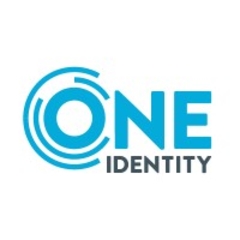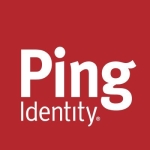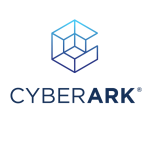What is our primary use case?
We manage companies identities and different legal bodies in it from all over Europe.
How has it helped my organization?
With One Identity Manager, we were able to get a lot of processes digital. A few years ago, we started to give all of our colleagues who were working in the retail stores their own smartphones, so they could use some of these processes. For this, it was key to have a good identity management system, where they could do all that.
Before that, we were using this tool for shared account management. We were able to do that pretty smoothly, and get everyone a personal account, which was pretty impressive.
We have integrated the solution with SAP. All our retailers can order their own goods for their stores and have access rights. Without this, it wouldn't be possible for everyone to manage their own stuff. We are local decentralized. We are only able to do this because we have the role management input and access rights in the SAP systems.
With GDPR, a lot of colleagues in my company were using this product last May. Especially for GDPR, things weren't that clear, so we built stuff that wasn't really necessary.
This solution has helped reduced help desk calls. We still could get way better; perfect.
What is most valuable?
It's a huge toolkit, and you can do a lot of stuff with it. You can extend nearly everything, so if you want to build something that may not have been though of by the vendor. You can do this with a partner, as we have done in the past. There is also support for these processes. Compared with other distributors who design their products to certain specification, you can put in your own processes, because not all companies function the same. You can write what you want, and the process should be like that.
The policy and role management features are huge. We have had some problems getting our colleagues onboard using these features. They are used to IT setting up everything. The features in the software are good, but there is a lot of transition you have to do inside a company to get these features working.
The solution is flexible. You can customize everything. You can do what you want in it. Sometimes, it is not unwise to do everything on your own, but you can.
What needs improvement?
We had to customize some stuff in the SAP system, because over the years there has been a lot of customizing in the Identity Manager. It works well, but some features that we would want or that our colleagues are operating and running with the SAP system, we can't really provide, or we have to develop on our own, with One Identity Manager. SAP works well with it, but it could be better.
I would like them to add some lifecycle management features.
They could improve the support.
When you look at the connectors to Microsoft Edge, we think that maybe it could work. However, when we build a hybrid environment, you can't really use the tools that One Identity Manager is providing.
They could make the product more user-friendly. It takes a lot of work to build technical and business cases with the product. The solution is more complex than you think to use.
The API server needs improvement.
For how long have I used the solution?
More than five years.
What do I think about the stability of the solution?
The stability is mostly pretty good. Now, we are having some issues with the version 8, where we can get the system to a stage where its not really working anymore. We wonder sometimes, why this box still in the software, and are we the only customers that are using it? Sometimes, we feel as if we are the first one using this product in production. Then, we speak with other customers, and they'll say that they have the same issues. Identity Access Management is middleware and should be top-notch. It can't fail. It has to work on peak performance at the times. When you find errors in the box, then it is a big problem. Even if it's not that important. Our standards are really high for a solution like this.
What do I think about the scalability of the solution?
Before the tooling there were around 80 peoples in IT at the company. Now, we're over 800. In IT and workers everywhere, identities have grown enormously, so there are more help desk calls, but there are now a lot of more identities.
How are customer service and technical support?
Sometimes, it's really good and fast. Sometimes, you make a service request and don't get an answer. Sometimes, you have to use management to get support for a really urgent problem. So that's not always good. Overall, its pretty good, but when you work with the product, you find bugs, and normally, they're fixed. Sometimes, we don't get a response that we want, and it's frustrating. I also see peak times, where it is pretty slow, then the support is really good and pretty fast.
How was the initial setup?
The initial setup was ten years ago. Back then, we had to do a lot of stuff on our own. Therefore, it was not that easy. I think it never is, because a lot of business policies have to change.
If you were to take the software, and start with it, in a company where you don't really have anything, then I believe it would be pretty easy.However, in a global company, that is using an SAP system or an AD for around 10 years or longer before you even think about getting One Identity Manager, then it gets really hard.
What about the implementation team?
We have had a lot people over the years, like Computer Center and IGF. Some experienced, and some who were not so experienced.
What was our ROI?
This solution has helped to increase employee productivity when it comes to provisioning users in our systems. This solution has been really effective with our retail workers. It wouldn't be possible to onboard and manage our 40,000 store employees without it. The management of the solution is pretty automated.
What other advice do I have?
Don't work too much in the beginning. Focus on what's really necessary and important. Forget the luxuries you have. There are old processes that are really great for some people and look like pieces of artwork. However, the maintenance of them is really expensive. So, know what you really need, what is your business case, and what is important for you. Keep it simple and structured. Then, you will be happy with a solution like One Identity Manager.
You have to understand the concepts of the software. Then, you can be productive and be happy with it.
We were able, with this solution, to go pretty fast from an on-premise AD and Exchange environment to a hybrid setup with a lot of stuff in the cloud.
Right now, we're not really using the privileged account governance features. It looks promising. In our organization, it looks promising, but we're not going to go there right now because its another responsibility for someone else in the company. So, while it looks good, we don't have the capacity to go there now.
Disclosure: My company does not have a business relationship with this vendor other than being a customer.















